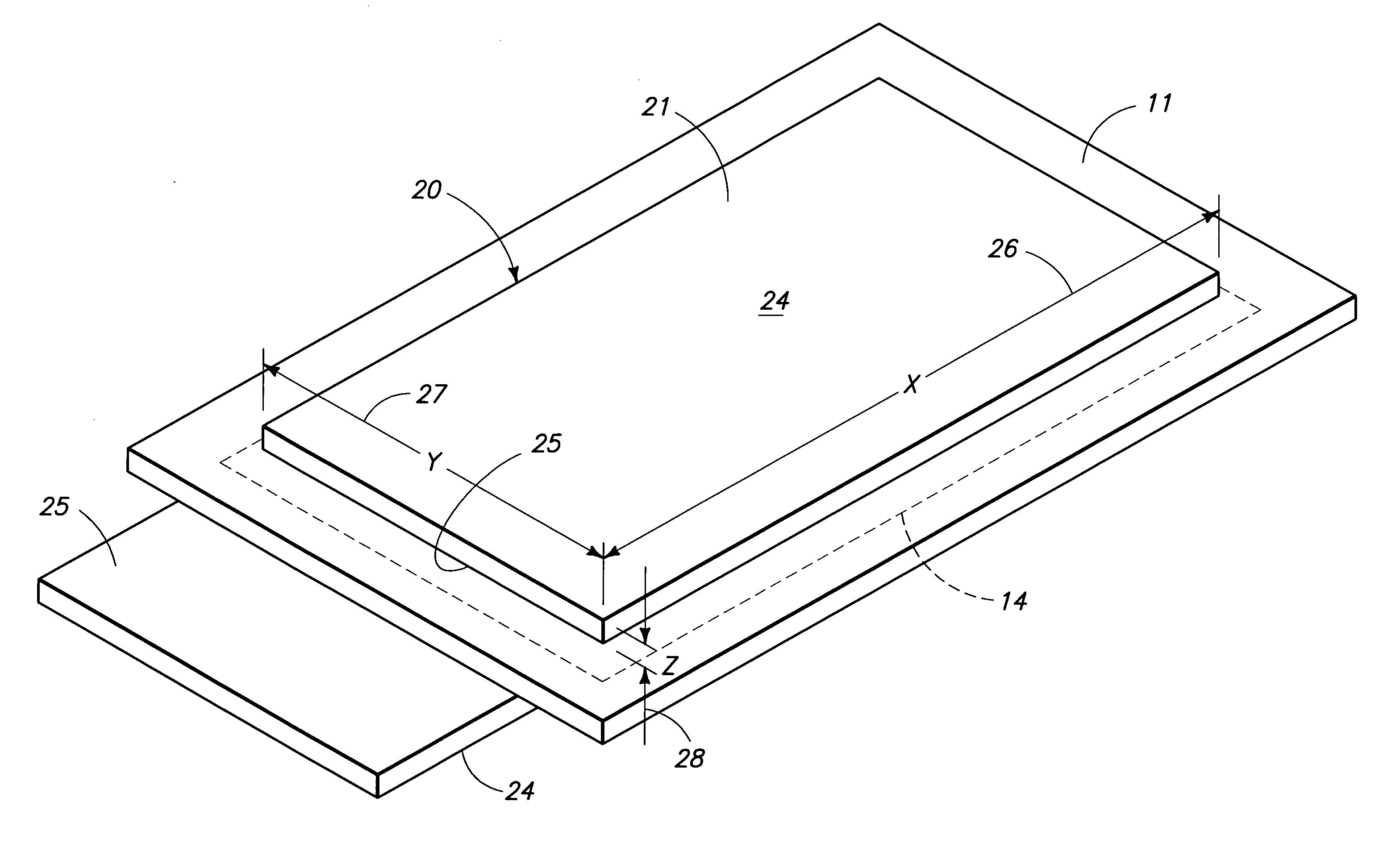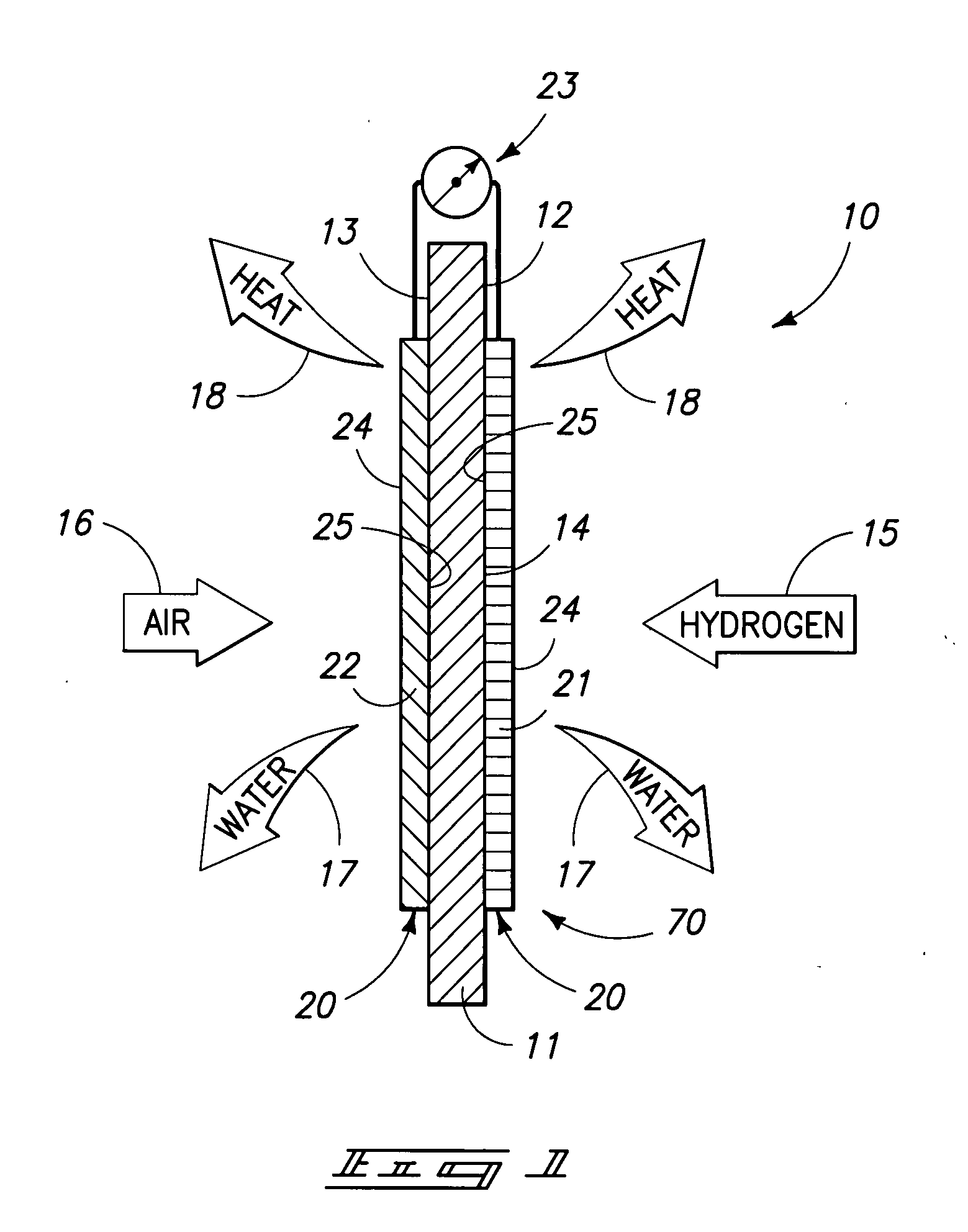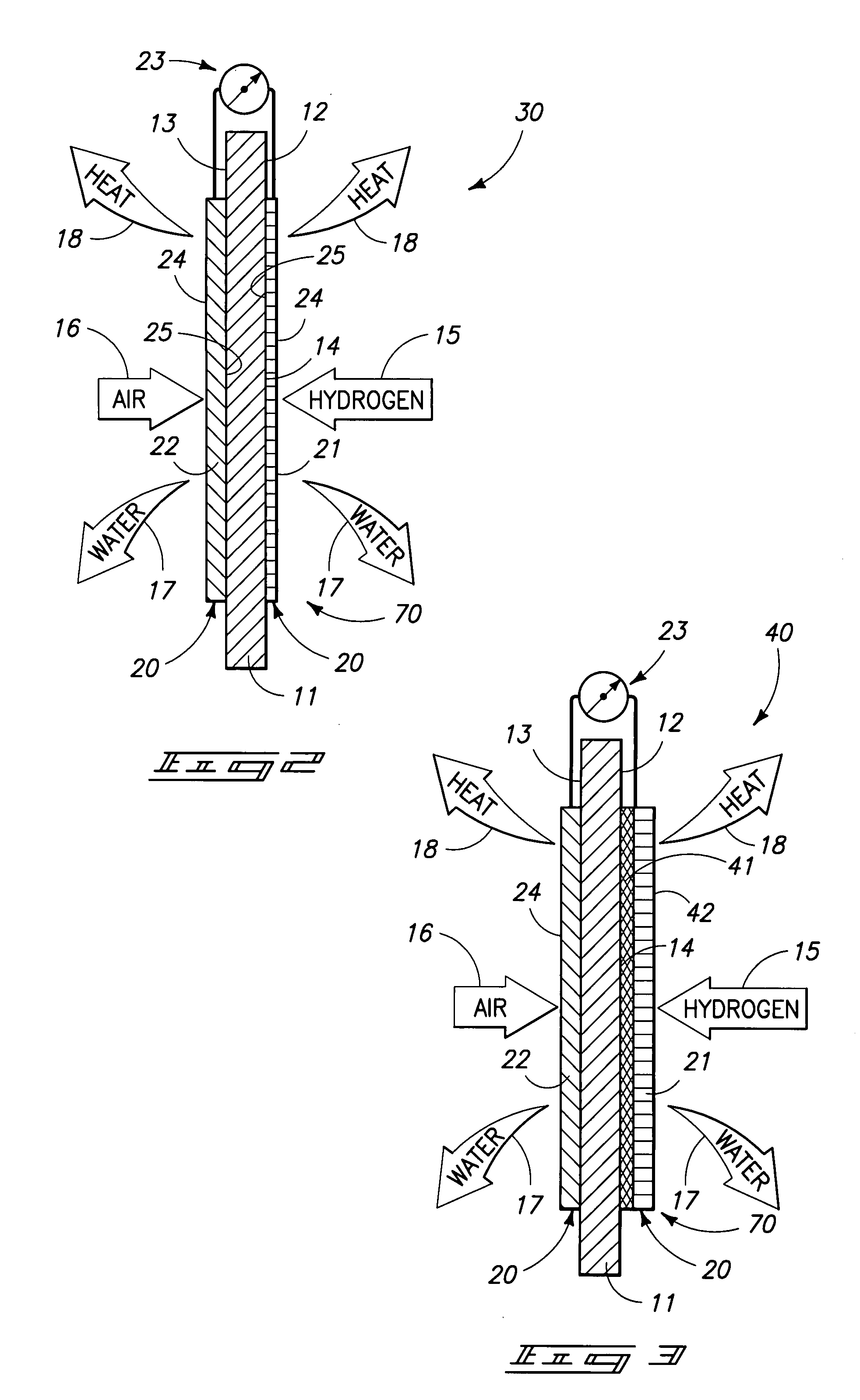Proton exchange membrane fuel cell
a technology of protons and fuel cells, applied in the direction of fuel cells, solid electrolyte fuel cells, cell components, etc., can solve the problems of reducing ph, and affecting the efficiency of fuel cell stacks
- Summary
- Abstract
- Description
- Claims
- Application Information
AI Technical Summary
Benefits of technology
Problems solved by technology
Method used
Image
Examples
example 1
[0042]A PEM fuel cell utilizing molybdenum disilicide as the porous, electrically conductive anode and cathode diffusion layers was examined. A test cell was assembled using a 16 square centimeter test fixture developed by the inventors. The cell was assembled using a proton exchange membrane-electrode assembly commercially available from W.L. Gore, and which was sized to fit the text fixture. The molybdenum disilicide gas diffusion layers were fabricated to be slightly undersized, that is, each had a surface area of approximately 11.5 square centimeters. Aluminum foam pieces were used as heat sinks on the anode and cathode sides of the fuel cell, with the cathode heat sink also functioning as a current collector. The molybdenum disilicide gas diffusion layers each had a measured permeability of approximately 1800 Gurley-seconds for the anode gas diffusion layer; and approximately 900 Gurley-seconds for the cathode gas diffusion layer. A nonwoven, carbon-based micro-gas diffusion la...
example 2
[0043]A PEM fuel cell utilizing titanium disilicide as the porous, electrically conductive anode and cathode diffusion layers was examined. A test cell was assembled using a 16 square centimeter test fixture developed the inventors. The cell was assembled using a proton exchange membrane-electrode assembly commercially available from W.L. Gore and which was sized to fit the text fixture. Titanium disilicide was used to fabricate both the anode and cathode gas diffusion layers. Silver-plated folded fin copper was used to fabricate heat sinks which rested in heat transferring relation relative to both the anode and cathode sides of the fuel cell. The cathode titanium disilicide gas diffusion layer had a measured permeability of approximately 170 Gurley-seconds. The anode titanium disilicide gas diffusion layer had a slightly higher permeability, which was measured at approximately 110 Gurley-seconds. A nonwoven, carbon-based micro-gas diffusion layer, commercially available from Freud...
example 3
[0044]A PEM fuel cell utilizing titanium nitride as the porous, electrically conductive cathode diffusion layer and titanium diboride as the porous, electrically conductive anode diffusion layer was examined. A test cell was assembled using a 16 square centimeter test fixture developed by the inventors. The fuel cell was assembled using a commercially available proton exchange membrane-electrode assembly which was secured from W.L. Gore. It was sized to fit the text fixture. The titanium nitride and titanium diboride gas diffusion layers were fabricated to be slightly undersized, that is, each with a surface area of approximately 11.5 square centimeters. Aluminum foam pieces were used as heat sinks on the anode and cathode sides of the fuel cell. The cathode heat sink also functioned as a current collector. The titanium nitride cathode gas diffusion layer had a measured permeability of approximately 730 Gurley-seconds. A nonwoven, carbon-based micro-gas diffusion layer, which is com...
PUM
| Property | Measurement | Unit |
|---|---|---|
| pore size | aaaaa | aaaaa |
| voltage | aaaaa | aaaaa |
| voltage | aaaaa | aaaaa |
Abstract
Description
Claims
Application Information
 Login to View More
Login to View More - R&D
- Intellectual Property
- Life Sciences
- Materials
- Tech Scout
- Unparalleled Data Quality
- Higher Quality Content
- 60% Fewer Hallucinations
Browse by: Latest US Patents, China's latest patents, Technical Efficacy Thesaurus, Application Domain, Technology Topic, Popular Technical Reports.
© 2025 PatSnap. All rights reserved.Legal|Privacy policy|Modern Slavery Act Transparency Statement|Sitemap|About US| Contact US: help@patsnap.com



